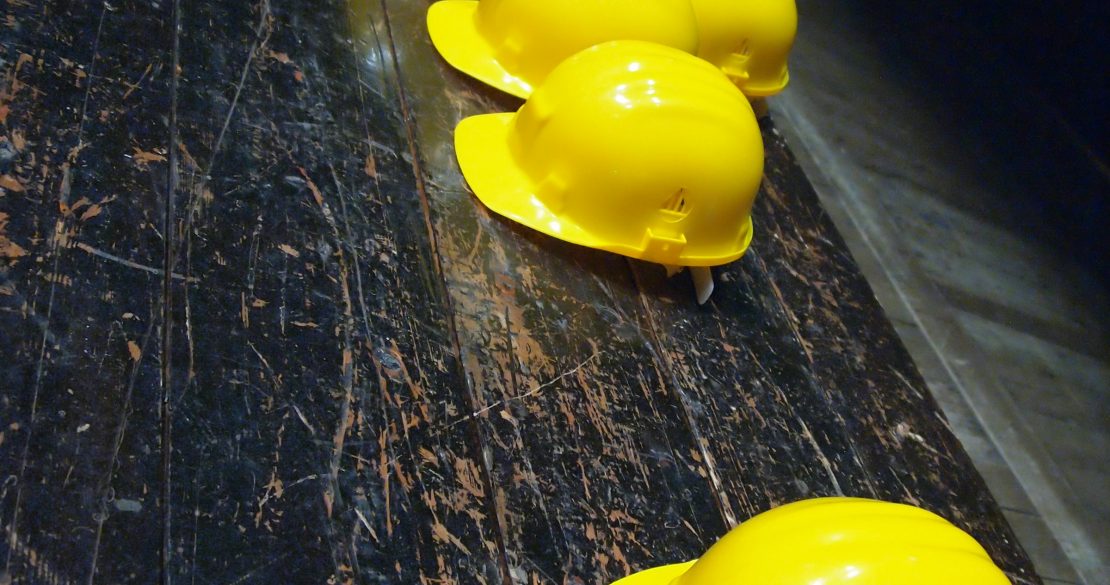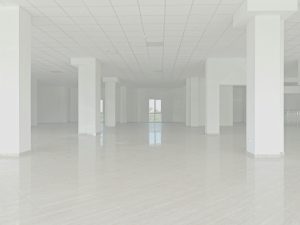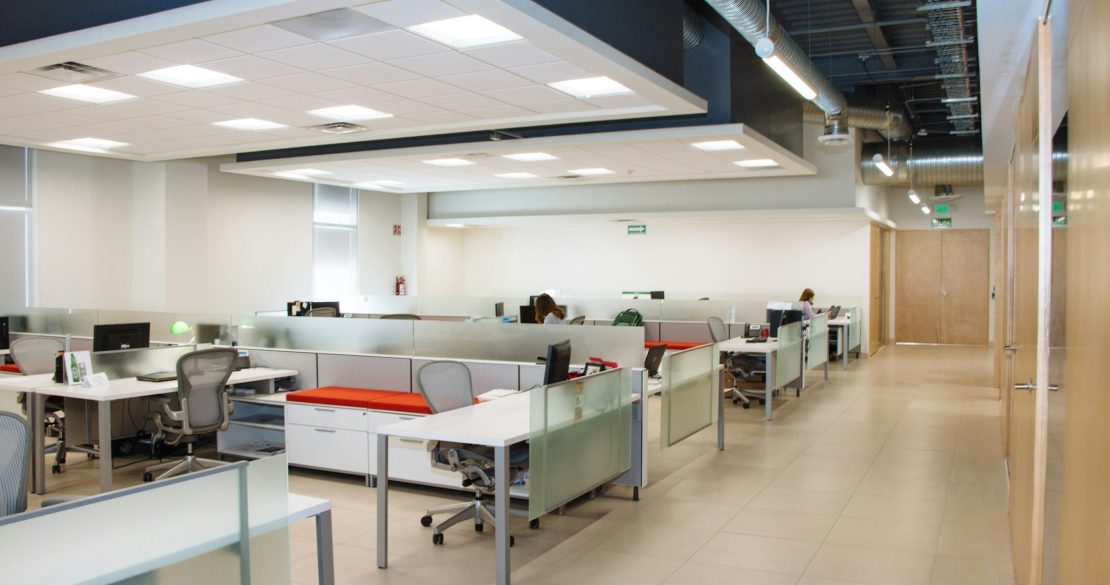Whether you’re the new tenant moving in or a landlord looking for guidance on your next tenant improvement project, there are things you need to be aware of before you begin. Tenant improvement projects can be difficult and full of pitfalls, or they can run smoothly and effortlessly so both tenant and landlord can reap the benefits of doing business in the newly built-out location.
To ensure you avoid some of the worst, we at Realty Asset Advisors have created this guide to help keep your next project on track.
Table of Contents
The ‘White Shell’
What Are Tenant Improvements?
The Challenges Ahead
Define Your Improvement Goals
Define Your Budget: Funding Sources
Define Your Budget: Allocating Funds
Leases
Permits & Code Compliance
Minimize Disruptions During Construction
Coordinating Multiple Stakeholders
Deadlines & Quality
Tips on Improving Your Space
Paint & Wall Coverings
Flooring
Lighting
Ceiling Fans
Windows
Doors
Hardware
Cabinets & Countertops
Plumbing & Electrical Systems
Internet Upgrades
Indoor Signage
Outdoor Signage
Final Thoughts
The ‘White Shell’
When a tenant moves out, or when a commercial or office space is new, it’s just a ‘white shell.’ This blank slate helps a new tenant imagine what the space can look like and visualize how to improve it to meet the needs of the company. Some parts of the shell include white walls, basic flooring, standard lighting fixtures, and more.
What Are Tenant Improvements?
Anything that needs to be done to a retail, office, or industrial space to make it effective and efficient for the tenant falls under the ‘tenant improvements’ banner. Typical improvements include:
– Painting and wall coverings
– Flooring
– Lighting and ceiling fans
– Windows
– Doors and hardware
– Cabinets and counter tops
– Plumbing and electrical systems
– Indoor and outdoor signage
The Challenges Ahead
There are a number of things to think about and prepare for before the project can begin. There will undoubtedly be stumbling blocks along the way – the reality of any construction or renovation project is that there is almost always something to uncover you may have not been prepared for.
Define Your Improvement Goals
One of your top improvement goals is to make yourself known in the space. Signage with company colors and logos, interior paint or wall coverings that reflect your brand, and necessary functional upgrades like HVAC, plumbing and electrical, and internet capabilities are among many tenants’ must-have lists.
Define Your Budget: Funding Sources
If you’re opening a franchise location, it’s possible the parent company has provided some funds for improvements like signage and branding so the proper, official branding of the company is reflected.
When moving into a leased space, the landlord may offer a Tenant Improvement Allowance (TI Allowance). This is money allocated by the landlord to assist tenants with build-outs.

A third source is your own wallet. If you own the company moving into the space, you’ll likely be footing most of the bill. If you’re opening a franchise location, the parent company’s money as well as any TI Allowance offered by the landlord only covers a specific dollar amount. Anything above and beyond falls to you.
Define Your Budget: Allocating Funds
Once you know how much you have to spend, you have to decide how and where to spend it. At the top of the list is branding – making your presence known to clients and customers. You need to allocate funds for signage, paint, and other markings that easily identify your company.
Not everything is about branding. If the previous tenant was a shipping and mailing service and your business is food service, you’ll likely need to plan for upgrades to electrical systems (to power large industrial mixers and ovens), and ensure plumbing and HVAC systems can handle larger usage.
Different tenants have different needs in terms of storage, workspace, flooring types, and more, all of which need to be allocated for in the budget. Itemizing and prioritizing improvements helps ensure the most necessary improvements are made first.
Reminder: Set aside a contingency fund to take care of any surprises found during demolition. Even if you’re moving into a completely new space in a brand new building, you should allocate a reserve for dealing with any problems that crop up along the way.
Leases
When your company moves into a space, whether it’s a retail location in a strip mall, a stand-alone building, or a single office suite in a massive office building, you sign a lease. The legal document outlines expectations of both parties involved (the tenant and the property manager).
Some of the items covered in the lease include the tenant’s ability to improve and customize the space for their needs, as well as the property manager’s role and contribution (tenant improvement allowance or labor provided) in improving the space to meet the new tenant’s needs.
Permits & Code Compliance
A new tenant can’t simply lease a space and start construction. Commercial tenant improvement projects must comply with a number of building codes, zoning laws, and permit requirements. Some of these parameters vary depending on building type, location, and other factors.
The permit process can be lengthy as it takes time to obtain all the necessary approvals. Delays in permitting can push back the project timeline and add unexpected costs – eating into your contingency fund as well as delaying opening (and thus when you can start to earn money).

When you work with Realty Asset Advisors, we help navigate this process to ensure permits are obtained quickly to keep projects moving forward.
Minimize Disruptions During Construction
If you’ve moved in and are able to operate while improvements are being made, you need to plan how to minimize disruptions to employees, customers or clients, and overall daily operations.
Noise, dust, and the need for temporary closures during extensive work can negatively impact your business’ bottom line, employee morale, and even your relationship with other tenants in the building.
By scheduling major construction projects during off-hours or in phases you can minimize disruptions during peak business hours. If you must conduct business while construction work is ongoing, invest in noise and debris control measures like temporary soundproof partitions and air filtration systems.
Tip: Maintain relationships with employees and other tenants by informing them of what to expect during construction, and offer alternative solutions if necessary, including temporary workspaces or work from home options.
Coordinating Multiple Stakeholders
Commercial tenant improvement projects involve more than just the tenant. Multiple stakeholders, including landloords, architects, engineers, and city officials join the list along with the tenant.
Establishing a clear chain of communication starting with a single point of contact for decision-making goes a long way in mitigating miscommunication that can lead to conflicting priorities, delays, and frustration. Taking advantage of technologies like project management software, holding regular check-in meetings, and defining every stakeholder’s responsibilities from the start make for a much smoother project. Such planning is also the key to tackling any challenges that may come up during construction.
Deadlines & Quality
Many tenant improvement projects come with a double-edged sword. Tenants may have strict move-in or improvement completion dates so business can move forward, but rushing the process to coincide with a specific date is far from ideal.
Consider using prefabricated or modular construction elements to reduce on-site labor and only worry about installation when components are ready. These pieces maintain quality with a quick completion time to keep your project moving along.

When you choose a contractor like Realty Asset Advisors, you’ll work with a team that delivers a top-notch product on your timeline. We’ll ensure quality every step of the way with concrete milestones to meet expectations.
Tips on Improving Your Space
When you made your priority list before beginning your improvement project, you identified the things most important to your build-out. These items may be important to your branding, important to the functionality of the space, or both.
Paint & Wall Coverings
A big part of company branding, and thus tenant improvement projects, is colors, which is often reflected in choices like paint colors and other wall coverings and features, since these are two very noticeable things when a client enters a space. Read our articles on The Best Paint Colors for Corporate Interiors and The Role of Color Psychology in Workplace Design to inform your color decisions outside your brand colors.
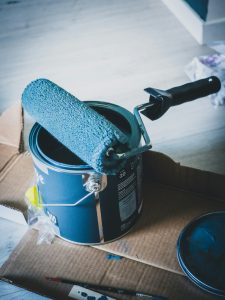
Flooring
Different businesses require different flooring. A restaurant or other food service tenant will likely require tile flooring rather than carpet or hardwood. An office tenant may have their choice of flooring materials based on their preferences and the purposes of each area of the office. If a kitchenette is installed, a client may want to lay tile there while keeping the hardwood or carpet in work areas only.
Lighting
You may not think of lighting when you think of branding, or of your tenant improvement project unless it’s a focal point for your business. Lighting is a utility, used for illuminating a space for employees to work rather than making an impression on customers or clients. If you’re thinking company branding, consider colored or other unique lighting that creates a memorable glow that can reflect your brand in a way traditional stark ‘daylight’ LED fixtures can’t.

Ceiling Fans
Another improvement that can be highly specific to the tenant moving in is ceiling fans. Keeping air moving is important for all spaces, but food service locations need extra help to keep diners cool while running ovens and industrial food prep appliances.
An office build out in a building with central HVAC systems may not need them as much, but ceiling fans add interest and keep the air moving to keep things from getting stuffy when windows can’t be opened.
Windows
Window replacement may or may not be part of a tenant improvement project, but a property improvement project between tenants. Updating windows can lead to a more beautiful building that attracts tenants but alsoo increased energy-efficiency and indoor comfort.

Doors
Like windows, doors may be improved outside of tenant improvement projects as well. Also like windows, new doors can attract new tenants, increase energy-efficiency and indoor air comfort, and more. A tenant may also be known for a certain look to their doors as part of their outside facade, and changing the doors will be a necessity before the tenant moves in.
Hardware
Hardware like hinges for cabinets, door handles, cabinet pulls and more need periodic updating. These smaller pieces of hardware get used and take a beating daily, requiring replacement. Additionally, tenants may want to choose their own replacements, and maybe go with a special design rather than a basic door pull from the local building supply store.
Cabinets & Counter Tops
Whether a tenant needs them ripped out, updated, or installed, cabinets and counter tops can be a major priority for some clients. Having the right storage and workspace from the beginning goes a long way toward efficiency and productivity. When everything has a place and everything is in its place, employees know where to get things when those things are needed, whether it’s replacement toner for the copy machine or replacement dish cloths for mopping up spills.

Additionally, installing the right counter tops from the start improves efficiency and productivity as well. Having the proper workspace available for key business activities – whether that’s weighing packages, preparing a sandwich, or building out a break area for employees complete with coffee bar, counter tops are a worthwhile investment for many tenant improvement projects.
Plumbing & Electrical Systems
Your newest tenant brings business to your office or retail space, but may also bring a demand for updated utilities. Extra or updated plumbing may be needed, and electrical systems may need an overhaul if the tenant’s business requires more power than the previous tenant.
If you’re a landlord, consider making these updates after one tenant leaves and before a new one signs a lease. Depending on how long it has been since the last replacement, codes may have changed and systems may require updates whether the tenant needs them or not.
Internet Upgrades
A good amount of the things we do today take place online. Email, e-commerce like taking customer orders through a website, and connecting all of your new tenant’s office computers to an in-house network all take up bandwidth.
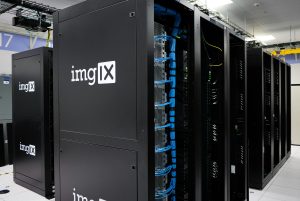
While upgrading your plumbing and electrical, take a look at your internet wiring as well. Faster load times means employees will be more productive, making for happier tenants.
Indoor Signage
No matter what other improvements you have in store, letting your customers or clients know you’re there is paramount. Having a sign with your logo and company colors near the entrance of your space also serves as a way to make a great first impression that lasts. Customers who walk into a ‘white shell’ with no color or signage aren’t likely to keep your business in mind the next time they need a product or service like yours. Indoor signage is typically within the business itself, near a reception desk or other point of entry.
Outdoor Signage
Including your business name on signage near the street or the sign on the outside of your stall on the building facade in a strip mall are both outdoor signage. They alert customers and clients of your presence and help to lure them in.
Keep in mind that some properties want to keep a clean, uniform look so a custom sign with company colors may not be allowed. When it is, make sure your name and logo are prominent to leave a lasting impression.
A third form of outdoor signage can be a simple sign outside your office in a larger office building. When all the offices inside the building look the same, having yours stand out with a sign of your company logo and colors will direct clients or customers exactly where they need to go.
Final Thoughts
Customizing your space to suit your needs and reflect your brand doesn’t have to be fraught with pitfalls. The staff at Realty Asset Advisors can help you navigate the process of your next tenant improvement project to ensure your renovation goes smoothly and results in a beautiful, functional space you’ll use for years to come.
Contact us today!


